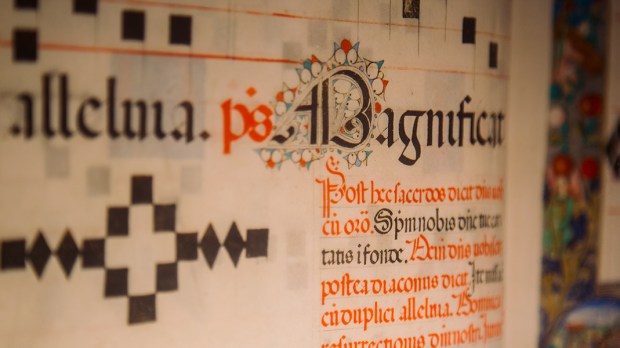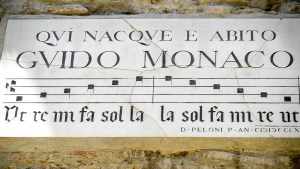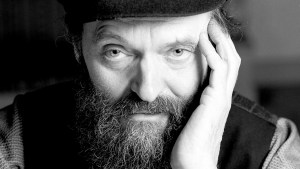Most people, whether Christian or not, are at least slightly familiar with Gregorian chant. But this 5th-century monophonic, unaccompanied liturgical music is far from being the first chanted psalmody in Christianity.
Singing has been an integral part of the Christian liturgy since its very inception. Based on a very specific passage found in the Gospel of Matthew, which explicitly mentions hymns were sung during the Last Supper (Cf. Matt 26:30), some believe the roots of Christian liturgical chant are found in ancient Jewish psalmodies. However, contemporary biblical scholars beg to differ. Based on some archaeological findings —the noted Oxyrhynchus Hymn in particular— they claim most early Christian hymns were not using the Psalms as texts at all.
The oldest Christian hymn
The Oxyrhynchus Papyri are a group of manuscripts discovered at an ancient rubbish dump near Oxyrhynchus (modern El-Bahnasa) in Egypt in the late 19th and early 20th centuries. All these manuscripts date from the time of the Ptolemaic and Roman periods of Egyptian history (that is, from the year 32 BC until the Muslim conquest of Egypt, in 640). Among those manuscripts, the Oxyrhynchus Hymn was found. This is the earliest known manuscript of a Christian Greek hymn containing both lyrics and Greek vocal musical notation. Written around the end of the 3rd century, the manuscript is now preserved at the Papyrology Rooms of the Sackler Library, Oxford.
The lyrics of the Oxyrhynchus Hymn begin by invoking silence for the praise of the Holy Trinity. This “silence” is a common trope in ancient Greek hymnody, and is traditionally referred to as “cosmic stillness.” Its lyrics are far from even alluding to anything that can be found in a psalm:
“together, all the eminent ones of God (…) [night] nor day (?) Let it/them be silent. Let the luminous stars not [. . .], [Let the rushings of winds, the sources] of all surging rivers [cease]. While we hymn Father and Son and Holy Spirit, let all the powers answer amen, amen, strength, praise, [and glory forever to God], the sole giver of all good things. Amen, amen.
Scholars also explain psalms were not sung in synagogues for centuries after the Second Temple was destroyed by the Romans in the year 70.
Early Christian liturgical traditions
Ancient Christian sources confirm Christians sang during the liturgy in those early days. This tradition, the chanting of the canonical hours in particular, has its roots in the early 4th century, when monks who followed St. Anthony into the desert began singing the complete cycle of 150 psalms each week —and other prayers, antiphons, and short hymns as well. By the late 4th century, antiphonal psalmody was already popular as much as in the Christian East as in the West, where it had been introduced by St. Ambrose. Augustine himself describes how responsorial psalms were already sung during Mass. But the fact that singing was popular does not mean it was standardized.Gregory I is often credited with compiling and standardizing these different traditions. However, that might not have been entirely the case.
Even what we now know as Gregorian Chant (the most standardized, canonical form of Latin monodic liturgical psalmody) is a relatively late development born out of several other traditions. It blossomed mainly in western and central Europe during the 9th and 10th centuries, and experienced some later modifications in the Late Middle Ages and in the Early Renaissance. Even if tradition credits Pope Gregory I with inventing Gregorian chant (hence its name, “Gregorian”) nowadays most scholars believe that this kind of monophonic psalmody is rather a musical development stemming from Carolingian, Visigothic, Roman, and Gallican liturgical chants. The plot thickens when one considers that Visigothic chant (more commonly known as Mozarabic Chant), for example, is itself the product of the melting of two other traditions. One, coming from northern Spain, known as Castilian-Leonese; the other one, from the south of the Peninsula, known as Toledane (from Toledo), although it most likely originated in Seville —as St. Isidore suggests.
These other two “smaller” traditions have a strong Jewish influence. Some scholars argue that as late as the 4th century Jews and Christians shared some liturgical practices (such as the recitation of the psalms and the reading of the Old Testament books) in the Iberian Peninsula. Some of the melodies we hear in these monodic liturgical forms might have derived from these practices.
How the chanting we now roughly identify as “Gregorian” developed from the 5th to the 9th centuries is still an ongoing debate between musicologists, historians, and liturgy experts. But most scholars agree that it was not until Guido D’Arezzo made his noted contributions to musical notation that what we now know as “Gregorian” chant was really born. The changes Arezzo’s system introduced in plainchant notation were so significant that they eventually led to a new form of chanting that was named in honor of the then pope Gregory II. It was rather the lore surrounding the image of pope Gregory I that eventually culminated in his portrayal as the actual “author” of Gregorian chant. In fact, the melodic content of what we now know as “Gregorian” chant simply did not exist in Gregory I’s day. However, that has not kept his “authorship” as being popularly accepted as a fact, even today.




